Shio Chanpon, or “cold Chinese,” is a popular dish in Nagasaki, Japan. Originally consisting of pork and bamboo shoots, this noodle soup has been added to the local diet in recent years. The flavor comes from adding Chinese lye, which is typically used in Chinese dumpling skins. Although there are many versions of chanpon, the name is derived from a Fujian word that means “to eat.” Some people believe that the chanting of Japanese drums is an integral part of this dish.
Shio Chanpon Recipes
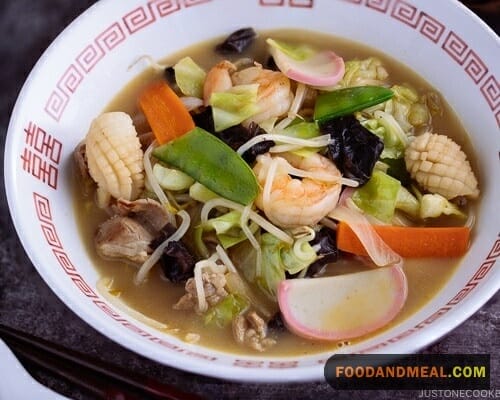
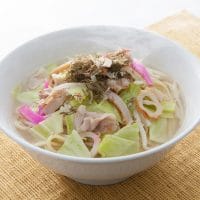
Shio Chanpon
Ingredients
- 2 tablespoons vegetable oil
- 1 cup cabbage chopped
- 1 cup carrot chopped
- 1 cup onion chopped
- 5 cups Vegetarian Clear Soup
- ½ cup Vegetarian Shio Tare
- 1 ⅓ pounds noodles fresh, such as Chukasuimen
- Negi
Instructions
- With all your ingredients ready to go, bring a large pot of water to a boil over medium-high heat.
- Heat your ramen bowls by filling them halfway with hot water. The bowls don’t need to be scalding, but they should be hot to the touch. Dump out the hot water and dry the bowls with some paper towels or a clean towel.
- Heat the oil in a wok or a large, deep skillet over high heat. Stir-fry the cabbage, carrot, and onion for a few minutes, until they are just cooked.
- Add the soup and tare to the wok and bring to a boil.
- Add the noodles directly to the soup. Cook for 1 minute.
- Pour the soup and noodles directly in each ramen bowl.
- Top with some negi and serve immediately.
Video
Notes
Noodles: Use 3 ounces of dried ramen noodles per bowl, preferably the thin, straight style.
Nutrition
© Food And Meal
This website provides approximate nutrition information for convenience and as a courtesy only. Nutrition data is gathered primarily from the Spoonacular Database, whenever available, or otherwise other online calculators.
Alternative Method: Slow Cooker Shio Chanpon
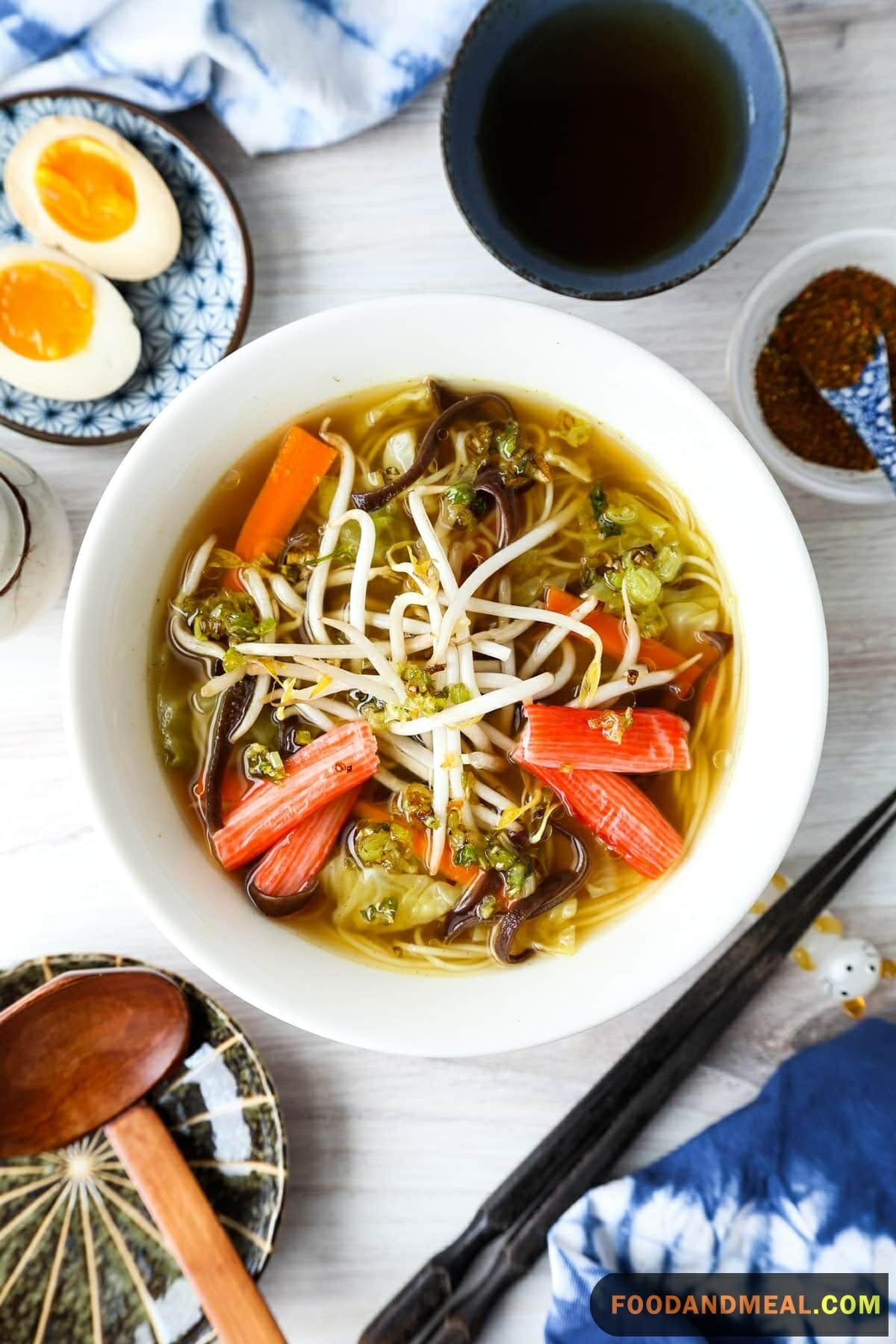
Ingredients:
- 1 pound mixed seafood (shrimp, scallops, squid, and mussels)
- 8 cups chicken broth
- 1 onion, thinly sliced
- 1 carrot, julienned
- 2 cloves garlic, minced
- 1/2 cup cabbage, shredded
- 1/2 cup bean sprouts
- 1/2 cup mushrooms, sliced
- 2 tablespoons vegetable oil
- 2 tablespoons soy sauce
- 1 teaspoon salt
- 1/2 teaspoon white pepper
- 1 package (8 ounces) ramen noodles
- Green onions, chopped, for garnish
Instructions:
- Sauté Vegetables: In a skillet, heat the vegetable oil over medium heat. Sauté the minced garlic, sliced onion, and julienned carrot until they start to soften, about 3-4 minutes.
- Transfer to Slow Cooker: Transfer the sautéed vegetables to your slow cooker.
- Add Broth: Pour the chicken broth into the slow cooker and stir to combine.
- Set to Low: Cover the slow cooker and set it to the low heat setting. Let it simmer for 6-8 hours. This slow cooking process will allow the flavors to meld and develop.
- Prepare Seafood: About 30 minutes before serving, add the mixed seafood to the slow cooker. Seafood cooks quickly, so this timing ensures it remains tender.
- Season and Cook Noodles: In a separate pot, bring water to a boil and cook the ramen noodles according to the package instructions. Drain and set aside.
- Season the Broth: Season the slow cooker contents with soy sauce, salt, and white pepper. Taste and adjust the seasoning if needed.
- Add Mushrooms and Cabbage: About 10 minutes before serving, add the sliced mushrooms and shredded cabbage to the slow cooker. This allows them to cook slightly without becoming overcooked.
- Serve: To serve, place a portion of cooked ramen noodles in each bowl. Ladle the seafood and vegetable broth over the noodles, making sure to distribute the seafood evenly.
- Garnish: Garnish with chopped green onions for a burst of freshness and color.
Tips for making Shio Chanpon
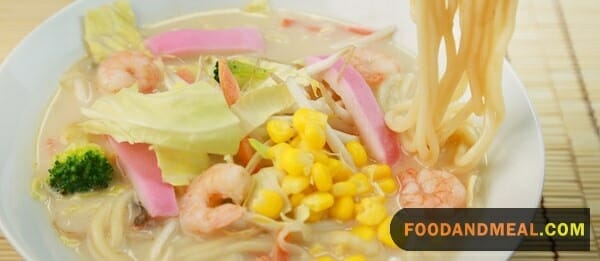
Cooking Tips
- Unlocking the Full Flavor: When making Shio Chanpon, the key to unlocking its full flavor is to simmer the broth slowly. Allow it to cook on low heat for an extended period, as this helps all the ingredients meld and create a rich, savory broth. The longer, the better!
- Fresh Seafood Matters: Using fresh seafood is paramount. Whether you choose shrimp, scallops, squid, mussels, or a combination, make sure they are fresh and properly cleaned. This ensures the seafood’s natural sweetness shines through.
- Balancing Saltiness: Since “shio” means salt in Japanese, it’s important to balance the saltiness. Start with a small amount of salt and adjust gradually. Remember that soy sauce also contributes saltiness, so taste as you go.
- The Perfect Noodle Texture: To achieve the perfect noodle texture, cook the ramen noodles separately, following the package instructions. Rinse them under cold water to stop the cooking process and prevent them from becoming too soft.
Serving Suggestions
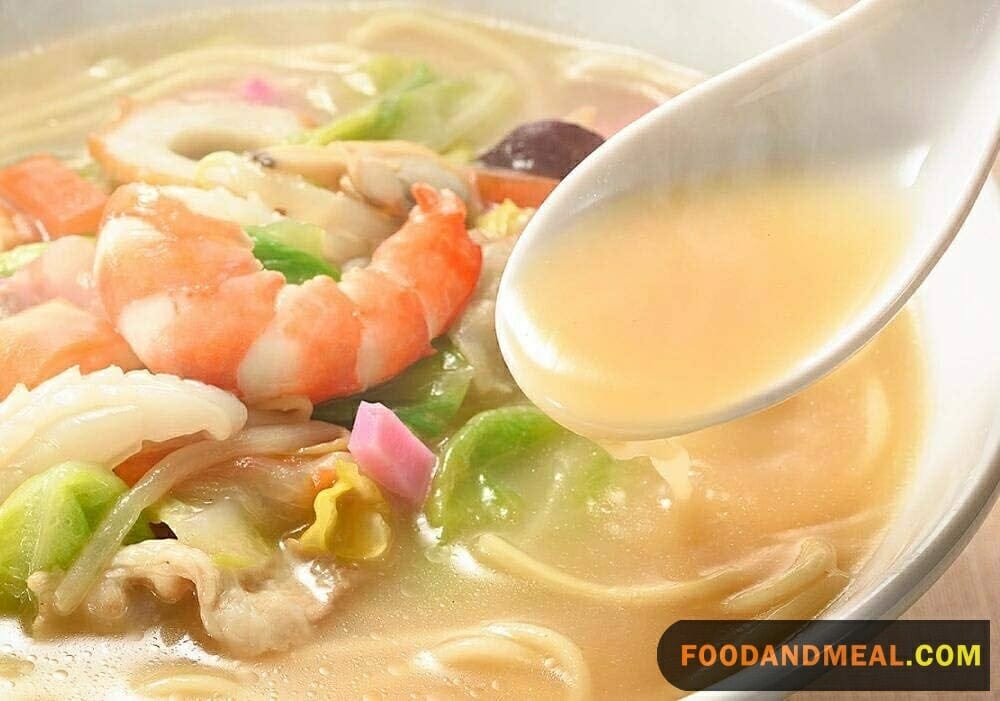
Complementary Sides:
- Serve your Shio Chanpon with a side of pickled ginger, which adds a delightful zing that complements the seafood and broth beautifully.
- Steamed edamame or a seaweed salad make excellent appetizers to set the stage for your ramen feast.
Garnishes Galore:
- Elevate your dish with a sprinkle of toasted sesame seeds or nori (seaweed) flakes for added depth and crunch.
- Fresh cilantro or Thai basil leaves can add a fragrant and herbaceous touch to your bowl.
Broth Beverages:
- Pair your Shio Chanpon with a cold Japanese beer or a chilled sake for a refreshing contrast to the hot and savory broth.
- For a non-alcoholic option, go for green tea or a sparkling water with a squeeze of lemon.
Serving Styles:
- If you’re serving a crowd, consider setting up a “ramen bar” with various toppings and condiments so everyone can customize their bowl.
- Alternatively, present it in a traditional Japanese lacquer bowl for an authentic touch.
Frequently Asked Questions about Shio Chanpon
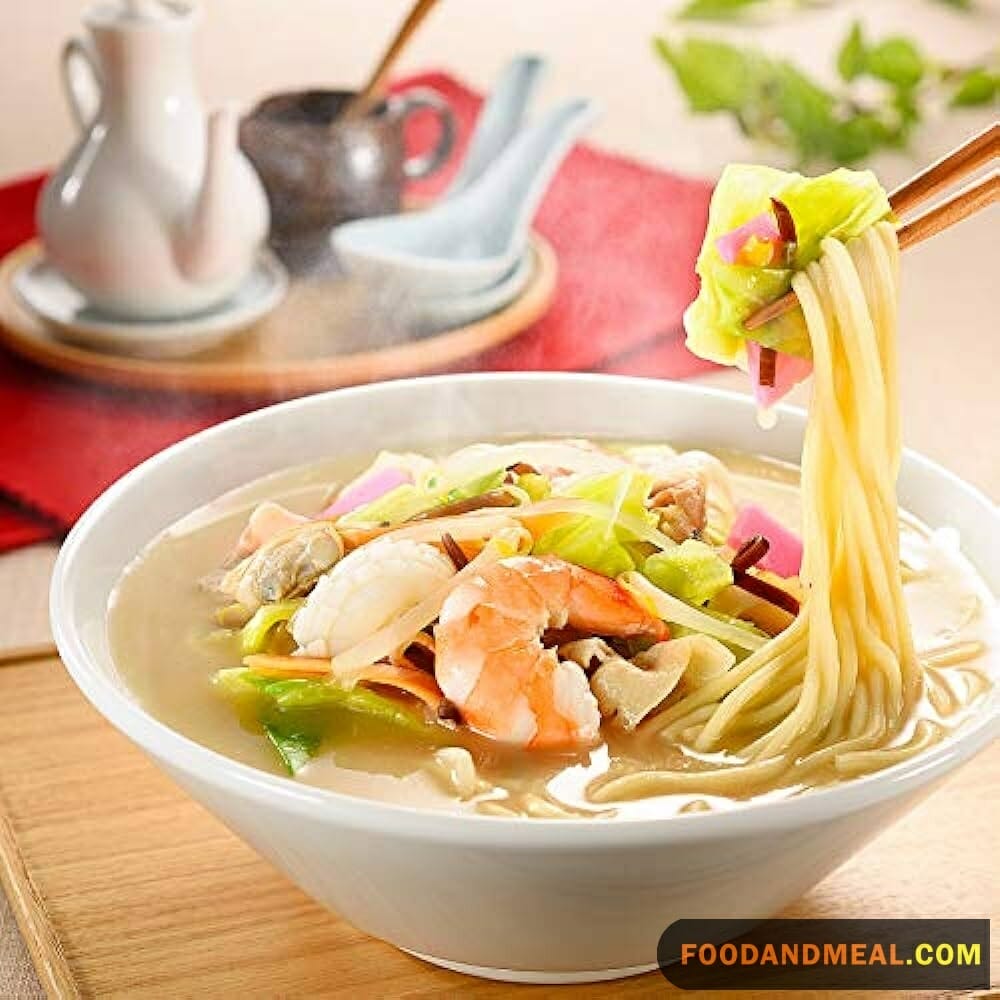
- Can I make Shio Chanpon vegetarian or vegan? Absolutely! You can create a delicious vegetarian or vegan version by using vegetable broth and replacing seafood with tofu or your favorite plant-based protein.
- What’s the best way to reheat leftovers? To reheat Shio Chanpon, bring the broth to a simmer in a pot and add the leftover noodles and ingredients. This will help maintain the flavors and textures.
- How do I store leftover Shio Chanpon? Store leftover soup and noodles separately in airtight containers in the refrigerator. Consume within 2-3 days for the best taste.
- Can I freeze Shio Chanpon? While it’s possible to freeze Shio Chanpon, the texture of seafood and noodles may change upon thawing. We recommend enjoying it fresh or refrigerated for the best experience.
- What’s the secret to a clear and flavorful broth?Achieving a clear broth comes from slow simmering, skimming impurities, and not overcooking the seafood. Use quality ingredients and be patient for the best results.
Indulge in the umami goodness of Shio Chanpon with our step-by-step recipe. Make it like a pro and savor authentic Japanese flavors. Subscribe for more culinary delights!
I'm James F Anderson, a noted sous chef from London and a Le Cordon Bleu alumnus. My career began in a Michelin-starred Parisian eatery, where my blend of classic and contemporary cooking, using seasonal ingredients, earned accolades. Recognized in culinary publications and on cooking shows, I’m committed to mentoring aspiring chefs and delivering memorable dining experiences, marking me as a standout talent in the culinary world.




